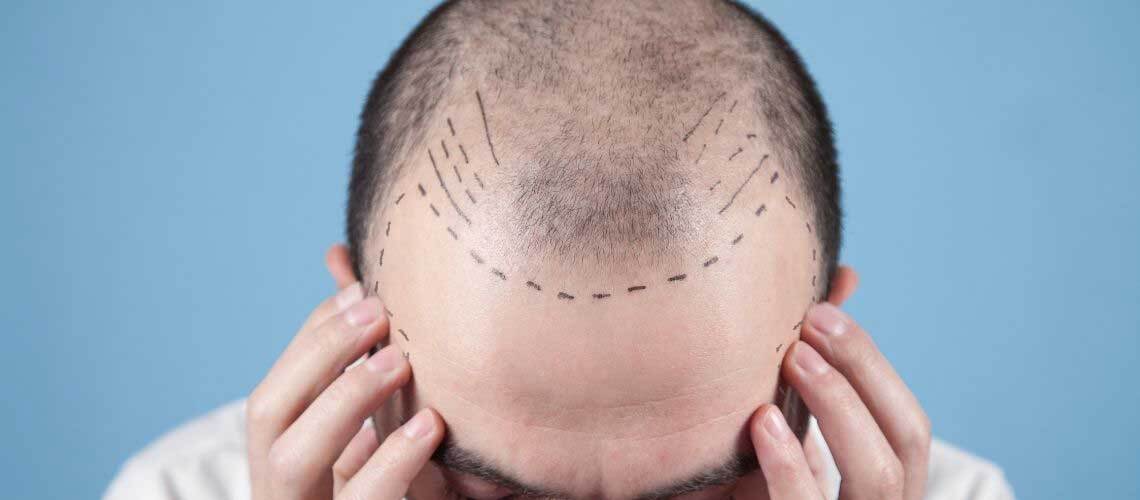
- Hair Transplant
-
by Mehmet Hanifi Kurtlar
Hair restoration, specifically for the temples, is increasingly sought after by individuals desiring a more youthful appearance. One effective solution is a hair transplant, the predominant method being the follicular unit extraction (FUE) technique. This intricate procedure involves relocating hair from a donor area to the temples, ensuring a seamless blend with existing hair. It enhances hair density and meticulously recreates natural hair patterns and directions. The outcome of this surgery is not only aesthetically pleasing but also enduring, with results potentially lasting over two decades, allowing for everyday hair styling and grooming.
Underlying Factors Contributing to Temple Hair Loss
Understanding the underlying factors contributing to temple hair loss is crucial in determining the appropriate hair restoration method. Male pattern baldness, or androgenetic alopecia, is a primary cause. This condition involves dihydrotestosterone (DHT) attacking hair follicles, leading to restricted growth and, eventually, the cessation of new hair development. However, several other elements can exacerbate or directly cause hair loss in the temples:
- Stress: Often overlooked, stress can significantly impact hair health, potentially leading to temporary or chronic hair loss.
- Traction Alopecia: This condition arises from hairstyles that pull hair too tightly, straining the follicles over time.
- Medication Side Effects: Certain medications can have hair loss as an unintended side effect, necessitating a review of current prescriptions.
- Smoking: A habit known for its adverse health effects, smoking can also impair circulation and damage hair follicles.
- Vitamin Deficiency: Adequate nutrients are essential for healthy hair growth; deficiencies can lead to hair thinning and loss.
- Hormonal Changes: Fluctuations in hormones, often experienced during life stages like menopause or due to medical conditions, can influence hair growth patterns.
Addressing these factors is as important as the hair restoration procedure itself. It ensures not only the effectiveness of the treatment but also the long-term health and vitality of the hair.
Feasibility of Hair Transplantation in the Temporal Region
The feasibility of hair transplantation in the temporal region, often called the temple area, is a significant aspect of hair restoration. This specific area requires a high level of expertise due to its visibility and the need for natural-looking results.
- Firstly, the unique anatomy of the temple area demands precise surgical skills. Surgeons must account for the natural hair growth pattern, which often includes finer, softer hair compared to other scalp regions.
- Secondly, the angle of hair implantation is critical. It differs from the rest of the scalp, requiring a more acute placement to mimic natural hair growth.
Moreover, the density of hair grafts in the temple region varies from person to person. Surgeons tailor the density to ensure a seamless transition between transplanted and existing hair. Additionally, the color and texture of the donor’s hair are matched closely with the temple hair for a more cohesive look.
Furthermore, the longevity of results in the temporal area is crucial. With proper technique and care, transplanted hair in this region can maintain its appearance for many years.
In conclusion, hair transplantation in the temporal region is a viable and effective solution for hair restoration. With advancements in techniques and the expertise of skilled surgeons, individuals can achieve natural-looking results that enhance their overall appearance.
Distinctive Aspects of Temple Hair Transplant Procedures
Temple hair restoration, a subset of hair transplant procedures, has unique nuances that differentiate it from standard hair restoration techniques. The Follicular Unit Extraction (FUE) method, widely utilized in these procedures, involves meticulous attention to detail to ensure a natural blend with the existing hairline.
- Precision in Hair Angulation: The angle at which hair is transplanted in the temple region is critical. This precise angulation ensures that the new hair grows harmoniously with the natural hairline, creating a seamless appearance.
- Density Matching: A key aspect is the careful matching of density. The transplanted hair must mirror the density of surrounding areas for a uniform look.
- Aesthetic Design: The shape and design of the hairline are tailored to each individual. This customization is vital to maintain the face’s natural contours and enhance overall appearance.
- Integration with Existing Hair: The transplanted hair is strategically placed to blend with the existing hair. This integration is essential for a natural transition between transplanted and original hair.
Moreover, temple hair restoration requires high skill to achieve an undetectable and natural-looking result. The surgeon must deeply understand facial aesthetics to recreate a hairline that suits the individual’s facial structure. Furthermore, the healing process is typically swift, allowing patients to return to their routine with minimal disruption. The longevity of the results is another remarkable feature, offering a long-term solution for thinning temples. This procedure restores hair and boosts confidence, significantly impacting the individual’s self-image.
Determining Suitability for a Temple Hair Transplant
Determining suitability for a temple hair transplant is a critical step in the journey towards hair restoration. Initially, a thorough consultation with a specialized hair transplant surgeon is essential. During this meeting, the surgeon evaluates several key factors:
- The condition of the donor area: This involves assessing the density and quality of hair in the area where hair follicles will be extracted.
- Medical history review: A comprehensive examination of the patient’s medical background is conducted to identify any factors that might affect the success of the transplant.
- Patient’s goals and expectations: Understanding what the patient hopes to achieve from the hair transplant procedure is crucial for tailoring a suitable treatment plan.
Moreover, alternatives to a hair transplant are often discussed during these consultations. Options include:
- Hair loss medications: These can be an effective solution for certain types of hair loss and may be recommended as an initial step.
- Non-surgical hair loss treatments: These can serve as an interim solution or as a complement to hair transplant procedures.
The limited nature of the donor area heavily influences the decision-making process. Since the scalp’s donor area has finite resources, premature hair transplant procedures can deplete hair reserves, complicating future treatments. Thus, surgeons often recommend waiting until hair loss is well-established before transplanting. This approach minimizes the likelihood of needing multiple surgeries in the future.

